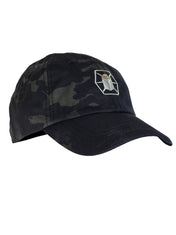Are you and your family ready in case of an emergency? Getting out of a dangerous situation means you need time and supplies on your side, and that is what survival kits are for.
When deciding what to put in your survival kit, it is important to consider where you live, how many people are in your household, how old they are, and their specific medical needs.
Here is a breakdown of anything and everything you should include in a survival kit.
Survival Kit Essentials for Evacuation
No matter what, these are the items every single survival kit should include:
- One gallon of water for each person to last at least three days (for example, four family members for three days would mean you need 12 gallons of water).
- Non-perishable food such as canned goods or dry snacks that do not expire quickly.
- A flashlight.
- A first-aid kit.
- A utility knife or other multi-purpose tool.
- A whistle.
- A sleeping bag.
- Manual can openers.
- A set of spare clothes and shoes meant to withstand harsh conditions.
- Gloves and hats.
- Hand-crank or battery-operated radio.
- Soap, deodorant, and other products meant for personal hygiene.
- Emergency contact information with names and numbers of family members.
- Cash.
- Phone chargers.
- Common batteries such as AA or AAA.
- Copies of birth certificates, medication lists, deeds, or other legal documents.
Home Survival Kit Essentials
Like an evacuation kit, you should always have a supply of essentials to survive for two weeks in your household in the event of a prolonged power outage or natural disaster. Everything in the above list applies to this section, with a few changes:
- A two-week supply of water for everyone in the household.
- Supplies for keeping your home secure, such as wooden boards or extra locks.
- Ensure your documents are in a fireproof and waterproof safe.
Survival Kit Essentials for Wilderness Survival
True survivalists know that being stranded out in the wilderness is dangerous and unpredictable. We are talking about situations where you could be outside for weeks at a time with no way to contact other people, whether it is because you are lost or geographically stranded.
What you can predict is what kinds of supplies and tools you will need. If you frequently hike or are often in remote wilderness, you know how easy it can be to get lost outdoors if you do not know what you are doing.
Even if you know how to navigate and are familiar enough with your location to find your way back to camp, there is always the chance of an accident. When making your survival pack, ensure you have the following items:
- A durable, waterproof backpack.
- A lighter, ferro rod, or lighter cubes.
- Emergency blanket.
- A water bottle and water purification supplies.
- A portable toolkit with a utility knife and multi-purpose tools.
- A fishing kit.
- Portable food ration packs.
- A first-aid kit.
- Cordage and duct tape.
- Any medications or medical equipment such as prescription medications and EpiPens.
Consider Your Location
Consider the weather and terrain of where you live. Is it prone to flooding, hurricanes, or tornados? While it is good to be prepared for anything, knowing which natural disasters pose the most risk will help you prioritize what you should pack.
Also, remember to purchase updated maps of the area if your phone or GPS does not function during a disaster. That way, you will know emergency routes or detours to get around areas that become dangerous.
Hurricanes
Depending on the severity of a hurricane, you may need to leave your home before it approaches quickly. Review local evacuation routes and make sure you have up-to-date insurance in case of property damage.
Make sure you have apparel meant to withstand heavy winds and rain. Having towels or emergency blankets can help keep you or a loved one dry and warm in extreme weather.
Floods
Like hurricanes, areas prone to flooding may ask you to leave ASAP. Have waterproof gear on hand and wear clothing meant to withstand water. It should also include towels or blankets for warmth.
Tornados
In the event of a tornado, you should prioritize finding shelter. A windowless room at the lowest level of the building should be your best bet. Many people opt for their basement if they have a room without a window on the first floor.
Ensure your supplies are ready to go should you need to evacuate your home or building after a tornado.
Snowstorms
Power outages and extreme weather conditions mean that you will need to ensure you have a source of heat. In addition to everything else mentioned in the kit, you may want to add a ferro rod, a lighter, or other fire-starting equipment. That way, you can create a fire even in imperfect conditions.
Earthquakes
Earthquakes usually come without warning. When they happen, hide under a bed, a desk, or other steady furniture AWAY from falling debris or items that could topple over.
A whistle can come in handy in case you are trapped under debris. If you hear first responders, you can use the whistle to alert them of your location.
Consider Your Family’s Specific Needs
If you or your family members take medication, be sure you have an unexpired week’s worth of supply in your kit. The same goes for any pets you have in the house. You should also include any specific medical equipment such as an EpiPen, hearing aids with spare batteries, and other essential medical items.
If you have young children, make sure you have packed a portable game or toys to have on hand. Depending on their age, children may not fully understand what is going on and become upset or bored from waiting in an evacuation area. Families with babies should also ensure they pack extra formula, diapers, and baby food.
Do not forget items that will be a good distraction for you as well. If you are someone who likes to read, pack a few books. Card or board games can also help pass the time during evacuation situations.
How Kitanica Helps
Our products were designed with survival in mind. Best of all, our apparel and gear are made to last and can be used for all outdoor needs.
Money Belt
Keep your most essential items like cash and other small but mighty objects in our COBRA® Money Belt. Built with a thirteen-inch zippered pocket, you can be certain your valuables will not slip away.
Jackets and Fleeces
Making sure you have room in your survival kit for everything you need means that you should not stuff a bunch of extra clothing in your pack. Our jackets and fleeces can withstand harsh conditions without weighing you down. Take our Bug Out Breaker (B.O.B. for short), for example. It is lightweight but able to retain body heat, all while fighting off harsh winds.
Or maybe you need something with plenty of storage space. Our MARK style jackets are some of our most popular products. It might have something to do with the fact that they made an appearance on “Mythbusters.” No matter the reason, we have designed our jackets with secure Velcro® closures, universal flashlight mounts, and MOLLE webbing, just to name a few perks.
Pants
Our line of jeans and tactical pants give plenty of room for you to store all sorts of supplies and tools. Plus, our tactical pants come with a padding system to keep your body protected. Our Raider Pants allow you to access any of your supplies in your pockets even while sitting down.
If you are ready to start wearing apparel and gear that will last through extreme conditions and situations, then Kitanica is here to help you and your family prepare for your future adventures.
Sources:
If You Get Lost | US Forest Service



